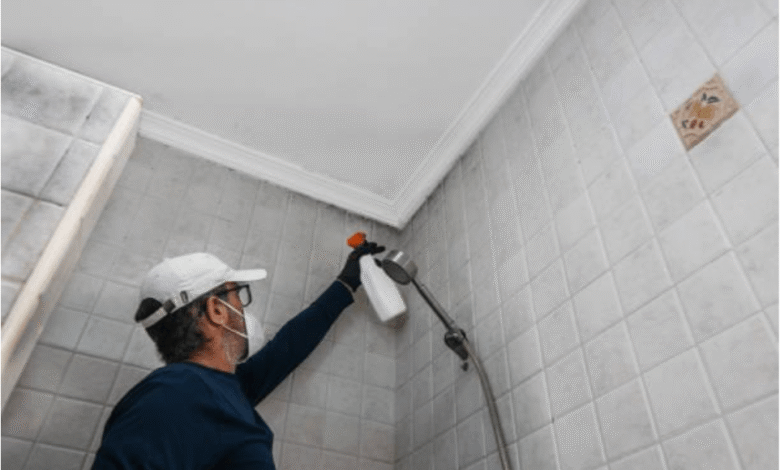Keeping your property safe from mold and mildew

Identify and Control Moisture
I control mold growth in my home by fixing water leaks and using a dehumidifier to keep indoor humidity levels between 30% and 50%—stick around for more tips.
Fix leaks in roofs, windows, and plumbing promptly
Leaks in roofs, windows, or pipes create wet spots that help mold grow fast. Mold spores can appear only 24 to 48 hours after a leak starts. If I see water stains on ceilings or peeling paint near windows, I act right away and patch the damage. Roof leaks often show up as brown patches; plumbing leaks might cause cracked drywall tape or swelling wood trim. Water seepage in crawl spaces and basements leads to musty smells and mildew growth. I remove any standing water at once using tools like wet vacuums, fans, or dehumidifiers from brands such as Honeywell and Frigidaire.
Fixing these problems keeps indoor air quality safe for people with asthma attacks, skin irritation, coughs, runny noses, allergic responses, or other respiratory symptoms. For bigger issues—like hidden bathroom leaks—I call licensed industrial hygienists for full mold assessment and remediation steps using EPA’s guidelines for care facilities and schools. Acting fast stops toxic molds before they cause serious health problems.
Use a dehumidifier to maintain indoor humidity between 30-50%
I set my dehumidifier to keep indoor humidity between 30% and 50%. Moisture levels above 60% increase the risk of mold growth, asthma triggers, and dust mites. I use a digital hydrometer to check relative humidity daily. My air conditioner helps lower moisture during hot months. If I spot condensation on windows or pipes, I wipe it away right away. Portable fans, dehumidifiers, and air conditioning systems dry carpets or wet building materials after water damage. Mold spores spread fast if wet spots remain in basements or attics. Using a clothes dryer with an outdoor vent also cuts down on extra moisture indoors. Proper ventilation is key next especially in bathrooms and kitchens, where steam builds up quickly.
Improve Ventilation
I use bathroom exhaust fans, air conditioners, and keep my windows open often—good airflow keeps mold spores from building up indoors, so check out more tips below.
Use exhaust fans in bathrooms and kitchens
Exhaust fans in bathrooms should run during every shower and for 15 minutes after. This step clears out moisture fast, cutting the risk of mold growth and mildew. Exhaust fans in kitchens help push steam and cooking humidity outside, lowering relative humidity inside the home. I always make sure these fans vent outdoors instead of attics or crawl spaces because trapped damp air leads to indoor mold. I clean exhaust fan vents often so they work well year-round.
Running exhausts while using stoves or dishwashers pushes extra moisture away, keeping allergy triggers like dust mites low. Limiting cooking simmer time also helps fight humidity buildup indoors. Regular use of these fans protects my home’s indoor air quality by controlling water vapor; this is one key part of good mold prevention practice according to EPA’s mold remediation guidelines.
Ensure proper airflow by opening windows and using fans
Exhaust fans do a lot for indoor air, but airflow needs more help. I always open windows if the outdoor humidity stays below 60 percent. This fresh air helps keep mold spores and dust mites from settling in. Portable fans dry wet spots fast after any water leaks or flooding. I move furniture away from walls and use floor fans so moist air does not get trapped behind big items. Clothes dryers vented outside also lower humidity levels, while drying laundry outdoors works even better.
In basements and attics, running fans keeps air moving to stop mould growth on porous materials like wood or fabric. Checking my HVAC system for standing water alerts me to problems with ductwork or condensation buildup that could trigger mold contamination or allergic reactions—quick action prevents health issues such as asthma triggers or throat irritation.
Regular Cleaning and Maintenance
I clean up with disinfectants, wear rubber gloves, and check my air ducts often—regular care stops mold spores from spreading fast. Want more tips? Keep reading!
Clean surfaces and vacuum carpets regularly
Clean surfaces using soap, water, or common household cleaners. Mold often grows on carpet, fabric, upholstery, and dust. I wipe countertops and floors weekly to remove mold spores and dirt. Use a bleach solution—1 cup bleach with 1 gallon of water for visible or smelly mold; always follow safety rules from the EPA’s mold remediation guide. Vacuum carpets with a carpet vacuum cleaner at least once per week to remove dust mites and mold spores hiding in fibers. Clean rugs after spills or moisture problems to stop water damage quickly. Replace carpets or upholstery if they are wet for more than two days—mold thrives in damp places. I follow a set cleaning schedule for all rooms, especially high-humidity zones like basements and bathrooms.
Add a vacuum cleaner with HEPA filters for better indoor air quality by trapping small particles that trigger asthma attacks or allergic reactions. Cleaning removes irritants that affect respiratory conditions such as emphysema or dermatitis. Use rubber gloves during cleanup to protect skin from harsh disinfectants and sanitizers found in many products designed for deep cleaning porous materials affected by fungi. Apply paint with mold inhibitors on walls where humidity levels stay high; this helps prevent future growth even where ventilation systems struggle to keep relative humidity under 50 percent.
Inspect moisture-prone areas like basements and attics
Vacuuming carpets helps, but I always check moisture-prone rooms like basements and attics for trouble. I look for water stains, cracked drywall tape, peeling paint, and rippling wall coverings. Mold growth hides behind walls and above ceilings. HVAC filters and drain pans show signs of dampness or mold spores if left unchecked.
Mold inspection and testing often include carpeted areas near humidifiers and in lower-level spaces for wet spots or condensation every month. Basements with standing water or crawl spaces with leaks increase humidity levels up to 50 percent, creating perfect conditions for dust mites and asthma triggers. Water leaks need fast attention; EPA’s mold remediation guidelines say prompt action keeps indoor air quality safe—waiting lets allergic reactions develop fast.
Mold Prevention Strategies
I act fast to dry any wet spots, use mold-resistant drywall, and always wear rubber gloves for safe mold cleanup…keep reading to pick up extra tips you can use right away.
Dry wet areas within 24-48 hours
Materials like carpet, drywall, and furniture can hold water after leaks or floods. Mold growth starts fast—only 24 to 48 hours after things get wet. I use fans or a dehumidifier to dry these areas right away. Moisture control stops mold spores from spreading and improves indoor air quality. I remove all wet items within 24 hours and clean each surface thoroughly. If an area gets soaked during flooding, I make sure it is completely dry within two days to avoid water damage and allergic reactions. Using EPA’s mold remediation guide for schools helps with large jobs in commercial buildings too. Next, using the right materials in renovations keeps future problems away.
Use mold-resistant materials in renovations
I use mold-resistant drywall and paints with mold inhibitors in damp places like bathrooms and basements. These products block mold growth on walls, ceilings, and floors. I avoid carpets in wet areas such as under water coolers or inside bathrooms to reduce the risk of dust mites and asthma triggers. During remodeling, I follow EPA’s IAQ Tools for Schools guidance for larger buildings. For high-risk spots, I choose waterproof flooring over wood or porous materials to prevent water damage from roof leaks or plumbing issues. Good ventilation helps keep humidity levels at 30% to 50%. Using these steps improves indoor air quality, cuts allergic reactions, and limits illnesses linked to mold spores. In my experience, each upgrade using these methods supports better mold prevention year-round.
Quick Response to Water Damage
I act fast after any water damage—using rubber gloves and cleaning aids, I dry out carpets, flooring, and porous materials to help stop mold growth…for more simple tips on mold prevention, keep reading.
Thoroughly clean and dry areas affected by flooding
Flooded rooms need a fast fix. I use dehumidifiers and fans right away to lower humidity and stop mold growth. Within 24 to 48 hours, I remove wet carpets and throw out soaked upholstery since porous materials trap moisture and mold spores. Soap, water, or EPA-approved cleaners help me finish the job for visible or smelly mold after water damage. I wear rubber gloves, boots, and goggles—safety matters with mold cleanup.
Good airflow is key; I keep windows open for ventilation while working. Bleach never gets mixed with ammonia-based products due to toxic fumes. Instructions on cleaning chemicals matter so I always follow the label’s advice from manufacturers like Clorox or Lysol. Next, hidden spots above ceilings or behind drywall get checked because secret leaks can lead to allergic reactions in people sensitive to dust mites or asthma triggers like myself.
Ensure proper drainage around your property
Water should always move away from the foundation. I clean gutters twice a year and keep downspouts clear, so rainwater flows at least 6 feet from my house. Pooling water near walls means poor grading or blocked paths; this leads to mold growth or water damage.
I use French drains and swales for extra runoff management. My HVAC drip pans get checked every month to prevent overflows that raise indoor humidity levels. After heavy rain, I inspect basements for leaks or damp areas right away—fixing issues within 24 hours helps avoid mold spores settling in porous materials like carpets or drywall.
Good drainage lowers the risk of asthma triggers such as dust mites and protects indoor air quality, too.
Conclusion
Mold grows fast when I ignore leaks or high humidity. To block mold, I keep air moving with fans and open windows. After floods or spills, I dry damp areas within 48 hours using dehumidifiers and towels. Regular cleaning stops spores from spreading on fabrics and carpets. These steps protect my health by lowering asthma triggers, allergic reactions, and breathing problems linked to common molds like Penicillium or Aspergillus.




